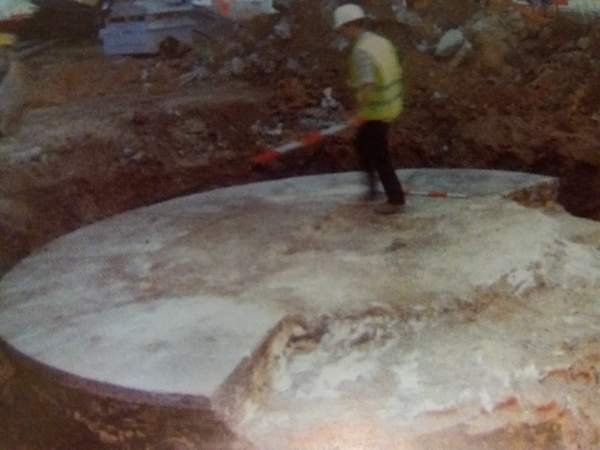Cervantes Time Capsule
During the remodeling works of Plaza de las Cortes it was found a time capsule under the statue dedicated to Cervantes. It had been hidden there for two centuries.
As all of us who live in the capital know, Bilbao is a place for works. Not only those in museums but also those in the streets. Here there is no corner that has not met with some crane, drill or hammer. It was therefore unavoidable that one day some of these works would touch the statue of Cervantes in the square of Las Cortes, in front of the Spanish Parliament. Unlike the other works, when the works in this square were carried out, they discovered that the statue was hiding a secret.
It all began in December 2009, with the square completely quartered, and both the statue and the pedestal of Cervantes set aside, amid a madness of bulldozers, and trucks suddenly a worker starts to make grooves with his arms, trying to stop the machines. One by one, the machines go off until the noise stops.

The man explains that there is something strange in the place where the statue was previously causing that the work finally was stopped. A layer of stone had appeared with a little ring: a kind of secret hatch. A group of archaeologists was immediately alerted to investigate in depth.
Before the presence of archaeologists, representatives of the artistic and political heritage the restorer Victoria de las Heras Puñal proceeds with care to open the trap door. From the open hole there is a bad smell. The technicians look at each other wondering if that smell would be toxic, covering their mouths. She finally bends over and with half a body stuck in the hole she pulls out something heavy. This is a black lead box, completely sealed.

The discovery is then taken to the regional archaeological museum in Alcalá de Henares. There they discover that the smell came from a chemical that bathed the whole box and that worked as a protection against insects and mold. Probably whoever put that mystery box in there knew quite a lot about chemistry. Finally after opening it carefully, they are set to discover the content.

As some experts believed, it was a kind of “time capsule” filled with documents from the time it was buried, 1834. By many of the objects and documents it could be told that there was a defense of liberalism against the absolutism present in that Spain. Objects with the replica of the testament of Ferdinand VII accepting the succession of his daughter Isabel II and denying it to his brother, the speech of María Cristina before the opening of the Cortes Generales , a copy of the Royal Statute for the Kingdom Courts or a book about General Mina who was a big opponent of Ferdinand VII’s despotism. Also, the casket contained an amount of coins and medals and five volumes of the Quixote edited by the Royal Spanish Academy in 1819.
Given the importance of the discovery , the authorities set up a temporary exhibition at the Post Office with the material found, which took place in summer 2010. Later the contents of the capsule were set in the Regional Archaeological Museum in Alcalá de Henares, although currently it is not exposed but they are still in charge of it. Possibly it will be in the Archaeological Museum of Bilbao.
So here ends this story leaving the doubt if in each monument or even fountain of Bilbao there will be a time capsule that someone left thinking about their future discoverers. We’ll bet there are.
We’ll be pleasant to know that you liked our post and we encourage you to continue discovering more about the city of Bilbao. If you want to continue discovering more things about Bilbao subscribe to our blog and we also recommend that you come any day from Monday to Saturday to not miss the best Free Tour Bilbao since you will discover many historical and funny stories about this incredible city.